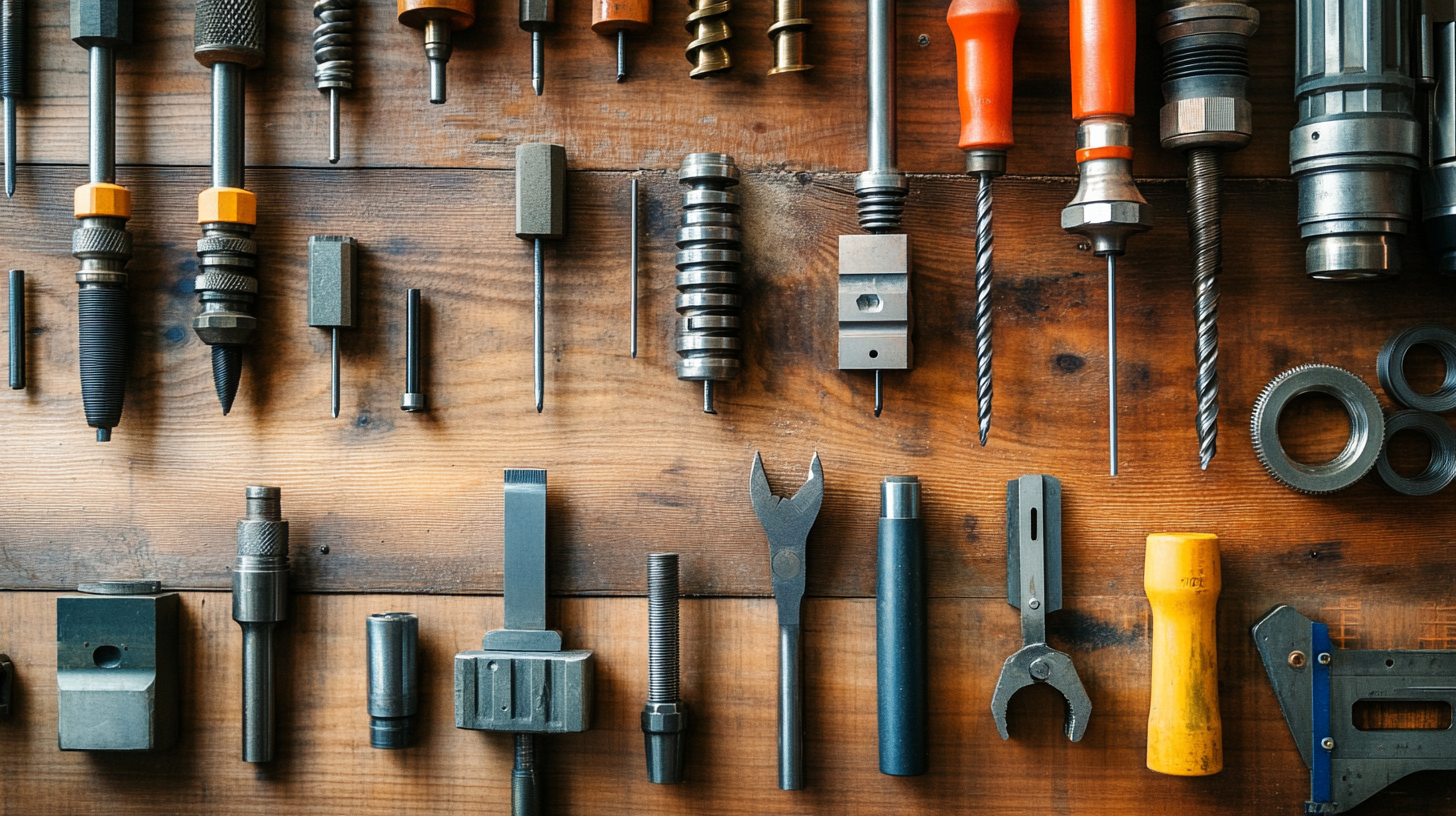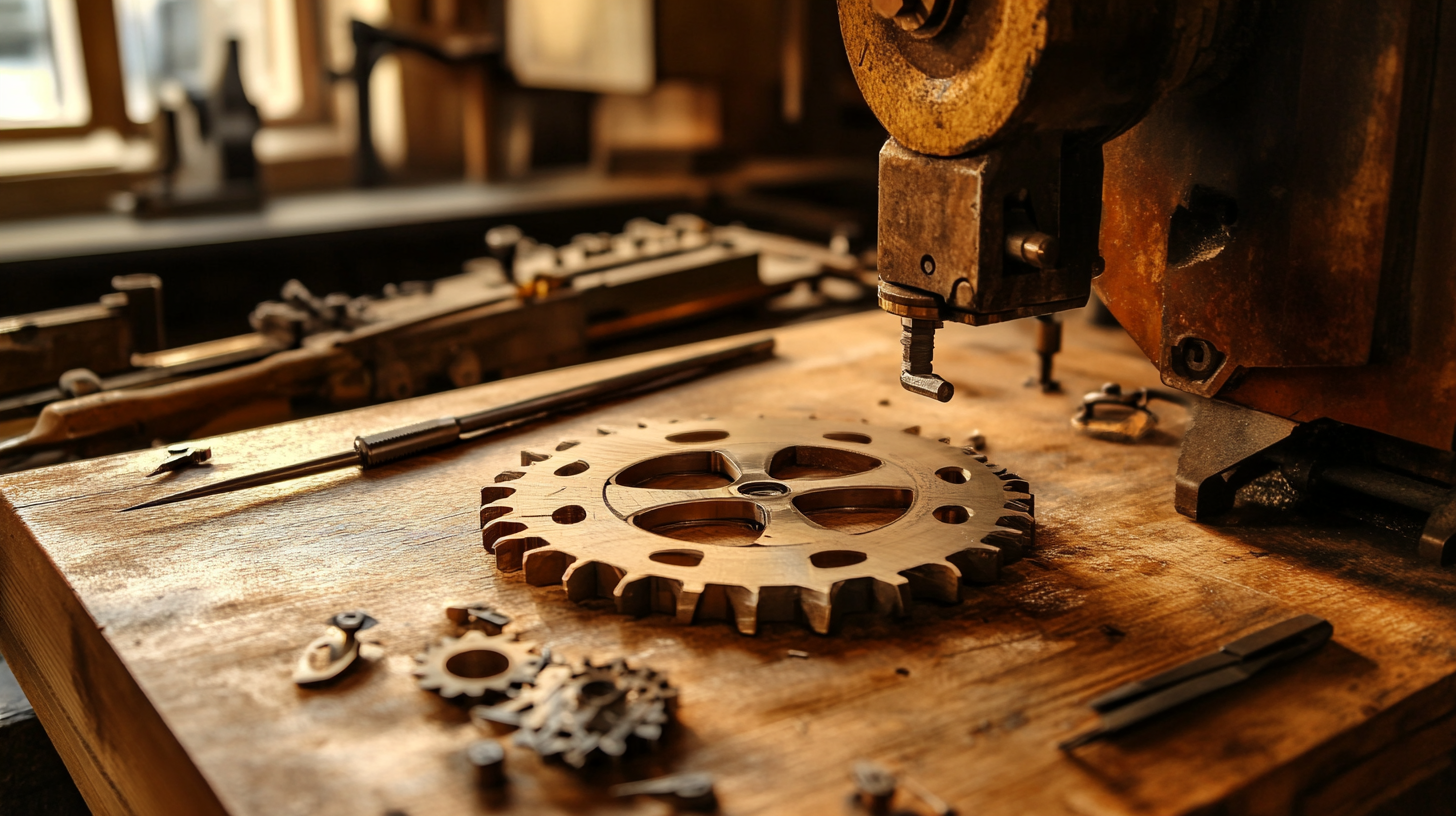
Selecting the right milling tools can significantly influence the success of your machining projects. Whether you're a seasoned professional or a newcomer to the manufacturing industry, understanding the critical factors that determine the effectiveness and efficiency of milling operations is essential. This essential guide aims to illuminate the key considerations you should keep in mind when choosing milling tools, ensuring that your equipment selection aligns with your project requirements and production goals.
Milling tools come in a variety of types, sizes, and materials, each suited for specific applications and materials. Factors such as cutting speed, feed rate, and tool life play crucial roles in the milling process and can impact the quality of the finished product. In this blog, we will explore the various aspects that you need to evaluate when selecting milling tools, including their compatibility with your machinery, the materials you'll be working with, and cost considerations. By the end of this guide, you will be better equipped to make informed decisions that enhance your project's performance and efficiency.

When it comes to milling, selecting the right tool is essential for achieving quality results in your projects. Understanding the different types of milling tools and their specific applications is crucial. For instance, end mills are among the most common milling tools used in various machining operations. They come in various shapes and sizes, making them versatile for performing tasks like drilling, contouring, and facing. Their design allows them to cut in both the axial and radial directions, which enhances their functionality across multiple applications. Another important type of milling tool is the face mill, ideal for producing flat surfaces and achieving a smooth finish. Face mills typically use multiple cutting edges, which increases efficiency and reduces the time needed for complex machining tasks. They are especially useful for large-scale operations where productivity is a priority. Understanding the differences between these tools allows machinists to select the most suitable option for their specific project requirements. Additionally, specialty milling tools, such as ball nose mills and T-slot cutters, offer unique capabilities for more precise operations. Ball nose mills, for example, are perfect for creating curved surfaces and intricate designs, making them popular in the aerospace and automotive industries. T-slot cutters, on the other hand, are specialized tools designed for cutting T-slots in machine tables or fixtures. Familiarity with these tools and their intended applications not only enhances the quality of work but also optimizes production efficiency.

When selecting milling tools for your projects, one crucial aspect to consider is the material composition. The right tool material can greatly influence the efficiency, quality, and cost-effectiveness of your work. For instance, carbide tools are renowned for their hardness and wear resistance, making them ideal for cutting hard materials. However, they also tend to be more expensive. On the other hand, high-speed steel (HSS) tools are more affordable and suitable for softer materials, but they may wear out quicker when dealing with tougher tasks. This balance between material strength, cost, and intended use is vital for achieving the best results in your milling operations.
Another important consideration is sustainability. With a growing emphasis on environmentally friendly practices, architects and builders are increasingly opting for sustainable materials in their projects. Selecting tools that not only meet performance requirements but also adhere to sustainable principles can enhance the project's overall value. This involves taking into account the entire life cycle of the materials, from manufacturing to disposal, ensuring that choices made today contribute positively to both the environment and the health of those using them. Ultimately, understanding the material properties and the impacts of tool selection on both project outcomes and sustainability will lead to more informed and responsible decisions in milling tool selection.

When selecting milling tools for your machining projects, understanding the importance of tool geometry is crucial for achieving optimal performance. The geometry of the cutting edge can significantly enhance cutting efficiency, wear resistance, and surface finish quality. A well-designed edge geometry not only reduces cutting forces but also promotes better chip formation and minimizes vibration during the milling process.
Research has shown that specific tool geometries can directly affect machining outcomes. For instance, the influence of helix angle on cutting forces demonstrates that a larger helix angle can lead to increased axial force but reduced radial force. This balance is essential to maintain stability during the machining of challenging materials. Additionally, the cutting edge micro-geometry, including parameters like cutting edge radius, is vital for extending tool life and reliability in operations involving tough materials such as titanium alloys or austenitic stainless steels.
Moreover, the presence of built-up edges (BUE) can severely compromise machining performance, often resulting from inadequate tool geometry in specific milling conditions. By optimizing the cutting edge design and preparation, manufacturers can significantly mitigate residual stresses caused by machining processes, which in turn enhances the fatigue life of machined components. Therefore, investing time in selecting the right tool geometry tailored to your specific machining application is essential for improving overall productivity and performance.

When selecting milling tools for your projects, balancing cost and quality is crucial. A recent industry report from Technavio suggests that the global milling tools market is expected to grow by 7% annually, reaching a valuation of over $10 billion by 2025. This growth underscores the importance of making informed decisions about milling tool investments, especially when budgets are tight.
Investing in high-quality tooling can lead to longer tool life and improved machining efficiency. According to a study published by the Association for Manufacturing Technology, better tooling can increase operational efficiency by up to 30%, reducing production times and costs in the long run. However, premium-quality tools often come with a steeper initial price. It is essential to analyze how the longevity and performance of these tools outweighs upfront expenditure.
On the other hand, cheaper tools might seem attractive for immediate budget constraints, but they can lead to increased maintenance costs and more frequent replacements. The Society of Manufacturing Engineers states that the cumulative costs of inferior tools can exceed initial savings; in fact, up to 40% of manufacturing budgets can be wasted on poor-quality tools. Therefore, a balanced approach—investing in higher-quality tools that provide value through efficiency and longevity—is advisable for sustainable project management. Careful consideration of both cost and quality will ultimately pave the way for successful milling operations.
When it comes to milling tools, maintenance plays a crucial role in ensuring longevity and consistent results in your projects. Proper care not only maximizes the lifespan of your tools but also maintains their efficiency and precision. Regular cleaning is the first step in any maintenance routine. After each use, milling tools should be free from debris and built-up material to prevent any potential damage. Utilizing a soft brush and cutting fluid can help remove any residues, ensuring your tools remain in optimal condition.
Sharpening your milling tools is another essential aspect of maintenance. Dull tools can lead to poor machining results, wasting both time and material. Depending on the frequency of use and the type of material being worked on, establishing a sharpening schedule is vital. Investing in quality sharpening equipment can further enhance the effectiveness of this process, allowing for cleaner cuts and improved accuracy.
Lastly, storing milling tools correctly is essential for their longevity. Tools should be kept in a dry, organized space to prevent rust and deterioration. Using protective cases or racks can minimize the risk of nicks and bends. By prioritizing maintenance, from regular cleaning to proper storage, you can ensure that your milling tools remain reliable and perform consistently, no matter the project at hand.





